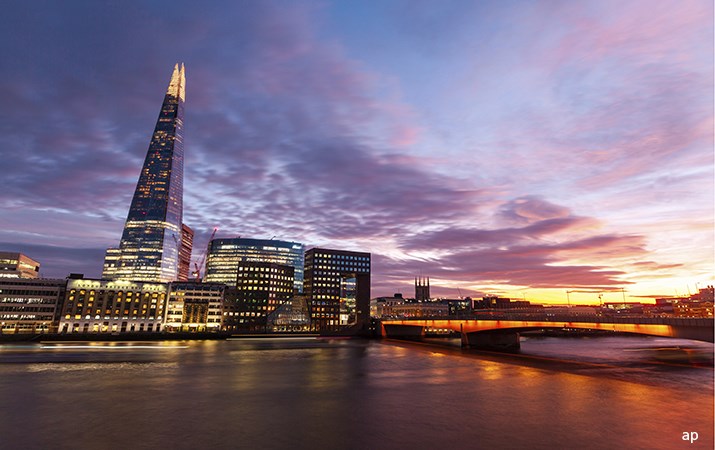
Peter Connolly started investing after the 2009 financial crash and recession. He saw how far the markets had fallen and thought this was an opportunity to make some money in the medium-term.
However, while some of these investments have delivered solid returns, others have been far more volatile to date.
Peter, who lives in Northern Ireland with his partner and three young children, since then has tried to diversify his holdings - investing in a range of different investment vehicles as well as property.
Peter, who is a senior project manager in IT, says: “Like most people my investment portfolio began with a pension. Having moved roles and organisations within my career I have ended up with a number of smaller pensions and one larger one.
“Just before my 40th birthday I decided to open-up a Lifetime Savings Isa with AJ Bell to make the most of the government ‘top-up’ payments — and I also have a few buy-to-let properties. These deliver a good yield in terms of the rent generated and hopefully they will also appreciate in value over time.”
Lisa Money is Locked Away
A Lifetime Isa (Lisa) is a relatively new savings product. They can only be opened by those aged between 18 and 40. Investors can put in a maximum of £4,000 a year until their 50th birthday — and will get an annual government bonus equivalent to 25% of that year’s contributions. This is broadly equivalent to the basic-rate tax relief available on a pension.
Unlike a pension though, investors can access their savings in a Lisa to make a deposit on their first property. Otherwise, the money stays invested until the holder’s 60th birthday when they can access these funds without penalty. Money can be accessed earlier in an emergency, but there are heavy penalties to pay which effectively wipe out the value of these government top-ups.
Peter is not using the Lisa to fund a property purchase, but hopes these savings can be used to either help his children through university or help him to retire early. He says the fact the money is locked away until his 60th birthday is a positive, as it encourages him to save. “Having children a bit later in life, the timing works well for when we are likely to need this money.”
Peter looks at a number of factors when it comes to choosing individual funds and direct shareholdings. “When it comes to buying managed funds performance is key. I try to look at how funds have performed over the last five years. Fees are also important, some are very high and this would be an issue for investors like me.”
He also looks at dividend yield, particular on direct shareholdings. “Shares don’t always go up in price so a strong dividend helps my funds increase. I have also more recently started to look at environmental factors too. I recently invested in an environmental fund. Although it has not been one of my best performers to date, it was important to me to support such an endeavour.”
Growth Funds and Shares
Peter’s current portfolio consists of a mix of managed funds and direct shareholdings. This includes Baillie Gifford Global Discovery fund and the AJ Bell Responsible Growth fund.
This Baillie Gifford fund is rated Silver by Morningstar, and has a 5-star rating, reflecting its strong performance in recent years.
Morningstar says the fund seeks to invest in immature, ambitious and entrepreneurial companies that are looking to scale up their operations on a global level. Morningstar says that if successful these companies can offer exciting returns for investors but points out that this focus on nascent companies in volatile sectors mean the strategy is likely to offer a “very bumpy ride”.
This fund has delivered strong returns for investors in recent years. According to Morningstar data it has delivered annualised returns of 25.21% over the past five years and 18.57% over the past 10 years.
Peter points out though that returns have dipped very recently though, with the fund down by 8.5% over the year to date. However he says this volatility is to be expected and he will be holding on for the longer term.
The AJ Bell Responsible Growth fund is a relatively new fund of funds, which has yet to build a three-year track record. The fund aims to achieve capital growth over the long-term through investments in assets that follow a responsible strategy. It invests in a mix of passive and other collective investment funds.
Banking Shares After the Crisis
When it comes to his direct shareholdings Peter still holds a number of banking shares which he bought in the wake of the financial crisis. This includes holdings in Lloyds (LLOY), NatWest Group (NWG) and Bank of Ireland (BIRG).
Peter says: “When I invested in Bank of Ireland they were a strong-performing bank. But then they completed a re-consolidation of shares to reduce volatility. However, shortly afterwards the shares took a nose dive, reducing the value of my investment by about 50%. This was difficult to accept but I hope they will recover in the long term.
“Lloyds on the other hand is currently going from strength-to-strength, the share price has increased in value and there has been an impressive dividend yield. As the economy gets back on track after Covid I hope these banking shares will all perform well.”





























